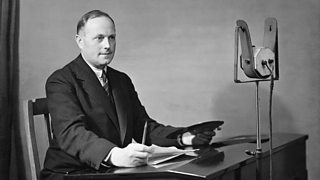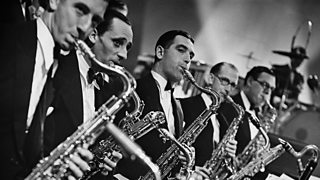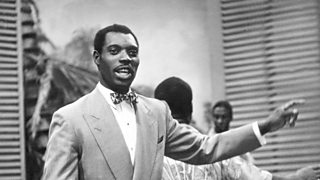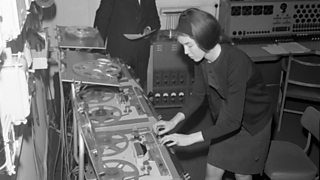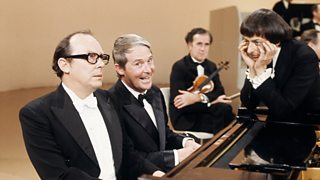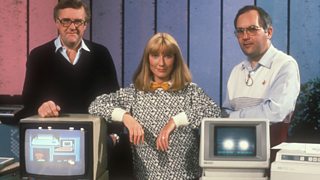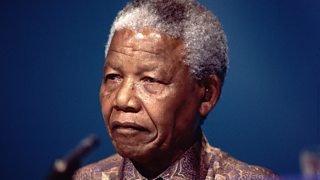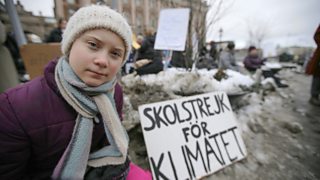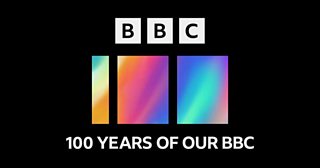The 1950s
The 1950s sees the Festival of Britain and the dawning of the TV age, while over on radio, Hancock’s Half Hour receives its first broadcast. The UK mourns a king and ushers in a new Elizabethan age with the Coronation of Queen Elizabeth II. We hear contemporary music by Shostakovich, Richard Strauss, Bernstein and Maconchy, and the unforgettable voice of Paul Robeson.
Listen on Radio 3 and 大象传媒 Sounds
-
![]()
Radio 3's Soundscape of a Century
Press rewind on a century of the 大象传媒 with an epic, eight-hour soundscape. Listen on 大象传媒 Sounds now (UK only).
The music
Works that define the spirit of the 1950s
- Richard Strauss: Four Last Songs (premiered posthumously at the 大象传媒 Proms in 1950)
- Igor Stravinsky: The Rake's Progress (1951)
- Sir Edward Elgar: Pomp and Circumstance March No 1 (1901)
- Michael Tippett: Dance, Clarion Air (1952)
- Elizabeth Maconchy: Proud Thames (1953)
- William Walton: Orb and Sceptre (1953)
- Peggy Glanville-Hicks: Etruscan Concerto (1954)
- Margaret Bonds: The Ballad of the Brown King (1954)
- Pierre Boulez: Le Marteau sans maître (1955)
- Leonard Bernstein: Candide Overture (1956)
- Little Richard: Tutti Frutti (1955)
- Dmitri Shostakovich: Piano Concerto No 2 (1957)
- Pete Seeger: Turn Turn Turn (1959)
- Paul Robeson: Mae hen wlad fy nhadau (the Welsh National Anthem)
Events to listen out for
1951
January: The Archers
The Archers, the longest running daily serial in the world, . It starts life the previous year on the Midlands Home Service, specifically intended for the farming community, but it soon becomes clear that there is a large general audience for the "serial play of country life", as the Radio Times describes it on its national launch. The Archers theme tune, "Barwick Green" by Arthur Wood, is instantly recognisable, and it remains the most popular non-news programme on Radio 4.
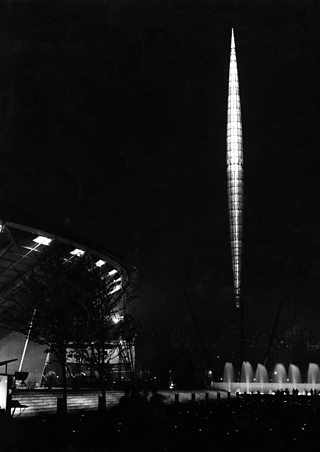
Listen to a classic episode of The Archers from the 1950s, including a fatal fire on the farm.
May: King George VI opens the Festival of Britain
Conceived as a centennial celebration of the Great Exhibition of 1951, the Festival sets out to focus on post-war recovery; to allow Britons a glimpse of international modernist architecture and scientific advances, and to showcase the arts.
Although most of the structures built for the Festival will later be discarded, the Royal Festival Hall will remain standing until the present day. It's the first major building to be completed in Britain after World War II, and will become the first post-war British building to be listed for preservation. Its opening concert on 3 May is an all-British affair, including works by Purcell, Arne, Vaughan Williams and Elgar (we hear his Pomp and Circumstance March No 1), conducted by Sir Adrian Boult and Sir Malcolm Sargent.
1952
February: The death of King George VI
The 大象传媒's John Snagge reads the formal announcement from Sandringham that King George VI has died peacefully in his sleep. Expressing sympathy for the Queen and the Royal Family on behalf of the 大象传媒, he concludes by informing listeners that the rest of the day's publicised schedule is cancelled, aside from news bulletins and essential shipping forecasts. George VI remains one of the United Kingdom's most beloved and respected monarchs. Listen to the announcement.
1953
January: Watch with Mother
Watch With Mother is not a programme in its own right, but a sequence of much-loved TV shows such as The Flowerpot Men, The Woodentops, and Rag Tag and Bobtail. Andy Pandy is the first programme to be featured in the slot. It starts out as an experiment – – but proves so popular it is repeated continuously until 1968.
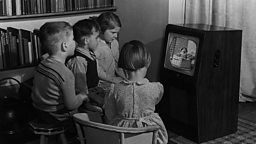
June: The Coronation of Queen Elizabeth II
The Coronation of Queen Elizabeth II, broadcast live on 2 June 1953, is the event that does more than any other to make television a mainstream medium. More than 20 million people watch the ceremony on television, outnumbering the radio audience for the first time. The 大象传媒 knew the event would be popular, based on the reaction to the limited broadcast of George VI's Coronation Procession, but could not foresee that it would mark the coming of age of television, as well as the modernisation of the monarchy.

The Coronation of Queen Elizabeth II, 2 June 1953
The Coronation of Queen Elizabeth II, broadcast live on 2 June 1953.
1954
July: Wartime rationing ends
Fourteen years of food rationing in Britain end when restrictions on the sale and purchase of meat and bacon are lifted. Members of the London Housewives' Association hold a special ceremony in London's Trafalgar Square to mark Derationing Day. The Minister of Fuel and Power, Geoffrey Lloyd, burns a large replica of a ration book at an open meeting in his constituency.
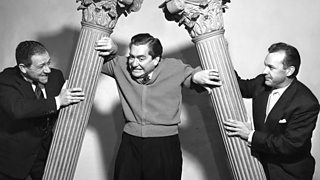
November: Hancock's Half Hour
Hancock's Half-Hour starts on 2 November 1954 with "The First Night Party". The series will run on radio and later on television until 1961.
Written by Ray Galton and Alan Simpson, Tony Hancock is Anthony Aloysius St John Hancock, "the lad himself", surrounded by a memorable cast of supporting players, chiefly Bill Kerr as his best friend, Sid James as a questionable friend, and Moira Lister as his girlfriend. The theme tune is written by Angela Morley.
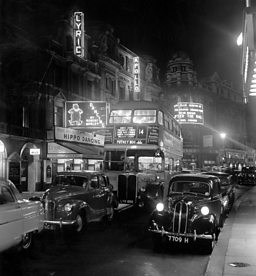
1956
October-November: The Suez Crisis
A crisis unfolds when Britain and France send in troops to recapture the Suez Canal after Egypt's President Nasser nationalises the Anglo-French Suez Canal Company and takes control of the vital sea route to the Indian Ocean and the Far East.
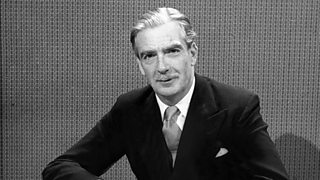
1957
May: A groundbreaking transatlantic concert broadcast
In 1957 the singer, actor and civil rights activist Paul Robeson performs a concert to an audience sitting in St Pancras Town Hall in London. Astonishingly, Paul Robeson is in New York, performing live over a transatlantic phone line. Listen to Paul Robeson's broadcast, introduced by Aleks Krotoski.
1958
April: The 大象传媒 Radiophonic Workshop
Based in the legendary Room 13 of , its staff use an often bizarre mix of objects to create sounds. The Radiophonic Workshop creates uniquely memorable electronic sounds – such as the Doctor Who theme music – and becomes one of the most significant influences on 20th century electronic music.


